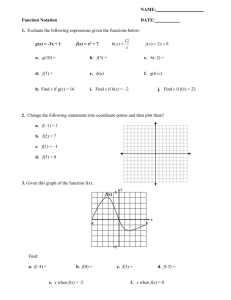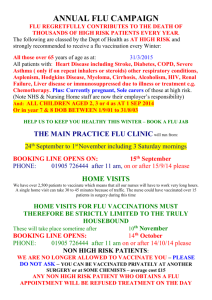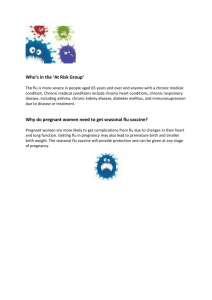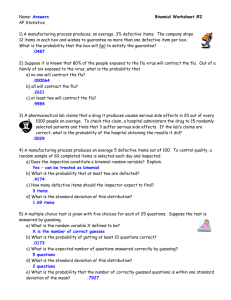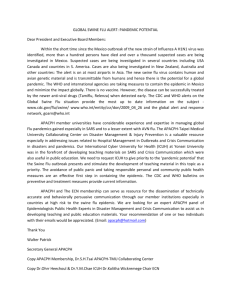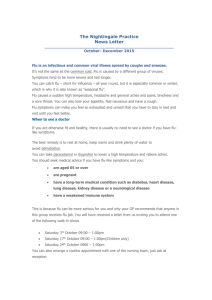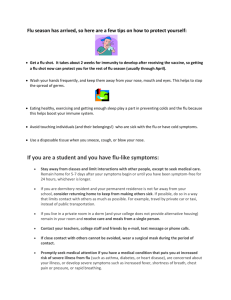Tutorial 1
advertisement
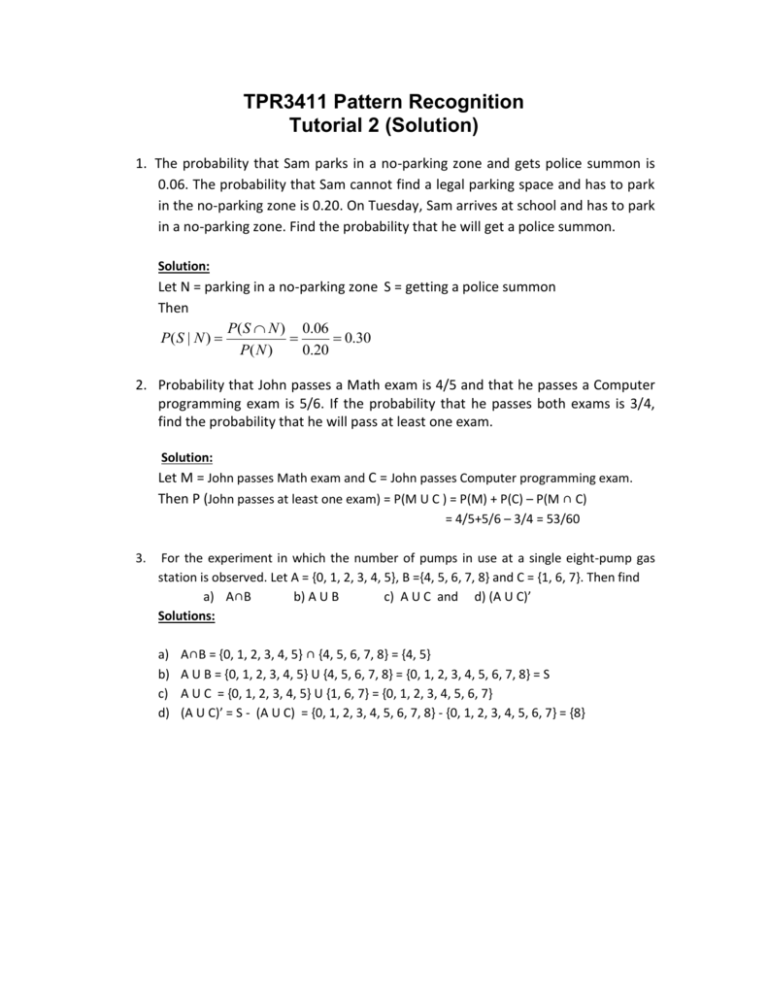
TPR3411 Pattern Recognition
Tutorial 2 (Solution)
1. The probability that Sam parks in a no-parking zone and gets police summon is
0.06. The probability that Sam cannot find a legal parking space and has to park
in the no-parking zone is 0.20. On Tuesday, Sam arrives at school and has to park
in a no-parking zone. Find the probability that he will get a police summon.
Solution:
Let N = parking in a no-parking zone S = getting a police summon
Then
P( S N ) 0.06
P( S | N )
0.30
P( N )
0.20
2. Probability that John passes a Math exam is 4/5 and that he passes a Computer
programming exam is 5/6. If the probability that he passes both exams is 3/4,
find the probability that he will pass at least one exam.
Solution:
Let M = John passes Math exam and C = John passes Computer programming exam.
Then P (John passes at least one exam) = P(M U C ) = P(M) + P(C) – P(M ∩ C)
= 4/5+5/6 – 3/4 = 53/60
3.
For the experiment in which the number of pumps in use at a single eight-pump gas
station is observed. Let A = {0, 1, 2, 3, 4, 5}, B ={4, 5, 6, 7, 8} and C = {1, 6, 7}. Then find
a) A∩B
b) A U B
c) A U C and d) (A U C)’
Solutions:
a)
b)
c)
d)
A∩B = {0, 1, 2, 3, 4, 5} ∩ {4, 5, 6, 7, 8} = {4, 5}
A U B = {0, 1, 2, 3, 4, 5} U {4, 5, 6, 7, 8} = {0, 1, 2, 3, 4, 5, 6, 7, 8} = S
A U C = {0, 1, 2, 3, 4, 5} U {1, 6, 7} = {0, 1, 2, 3, 4, 5, 6, 7}
(A U C)’ = S - (A U C) = {0, 1, 2, 3, 4, 5, 6, 7, 8} - {0, 1, 2, 3, 4, 5, 6, 7} = {8}
4. Imagine that you went to a friend’s wedding in Australia recently. It is known
that 1 in 200 people who visited Australia recently come back with swine flu. The
doctor selects you at random to have a blood test for swine flu. The test is 99%
accurate and the probability of a false positive is 2%. You test positive. What is
the probability that you have swine flu?
Solution:
P( Flu ) 0.005 , P(Flu ) 0.995
P( Pos | Flu ) 0.99 , P( Neg | Flu ) 0.01
P( Pos | Flu ) 0.02 , P( Neg | Flu ) 0.98
P( Flu | Pos)
P( Pos | Flu ) P( Flu )
P( Pos | Flu ) P( Flu ) P( Pos | Flu ) P(Flu )
0.99 0.005)
(0.99 0.005) (0.02 0.995)
= 0.07
5. Assume that you are on a quiz show. There is a prize behind one of the two
doors. The doors are coloured red and blue. A coin will be tossed to decide
which door to open. You were told that there is prize behind the red door 10% of
the time, and the blue door 20% of the time.
If given a choice to make, which door would you open in order to win the prize?
Solution:
P(Red) 0.5 , P( Blue) 0.5
P(Prize | Red) 0.1 , P(Prize | Red) 0.9
P(Prize | Blue) 0.2 , P(Prize | Blue) 0.8
P(Red | Prize)
P(Prize | Red) P(Red)
P(Prize | Red) P(Red) P(Prize | Blue) P(Blue)
0.1 0.5
(0.1 0.5) (0.2 0.5)
= 0.33
P(Blue | Prize) 1 0.33 0.67
Therefore, I would choose to open the blue door.
6. During the summer months, a retailer keeps track of the number of iPads it sells
each day during a period of 90 days. The number of iPad sold per day is
represented by the variable X. Compute the probability P(X) for each X.
X
Number of days
0
45
1
30
2
15
Total
90
Solutions:
For 0 iPad: 45/90 = 0.5
For 1 iPad: 30/90 = 0.33
For 2 iPads: 15/90 = 0.17
Number of iPads sold X
Probability P(X)
0
1
2
0.50
0.33
0.17
7.
Find the probability of getting a 3 or 4 or 5 while throwing a die where sample spaces
S={1,2,3,4,5,6,7,8,9}.
Solution:
Sample Spaces S={1,2,3,4,5,6,7,8,9} and event E={3,4,5}.
We have, number of outcomes=3 and total number of outcomes = 9
So, P(E)=3/9=0.3333
8. The probability distribution shown in the given table represents the number holidays
that an MMU student spends in the home town per 2 weeks. (That is, 18% do not go
to the home town– so sad, 34% spend 1 day, 23% spends 2 days and so on).
a) Find the mean
b) Compute variance and standard deviation
Number of days X
Probability P(X)
0
1
2
3
4
0.18
0.34
0.23
0.21
0.04
Solutions:
a)
X P( X )
= (0)(0.18)+(1)(0.34)+(2)(0.23)+(3)(0.21)+(4)(0.04)
= 1.6
b)
2 ( X ) 2 P( X )
[(0 1.6)2 0.18] [(1 1.6)2 0.34] [(2 1.6)2 0.23] [(3 1.6)2 0.21] [(4 1.6)2 0.04]
= 1.23
The standard deviation is 2 1.23 1.1
